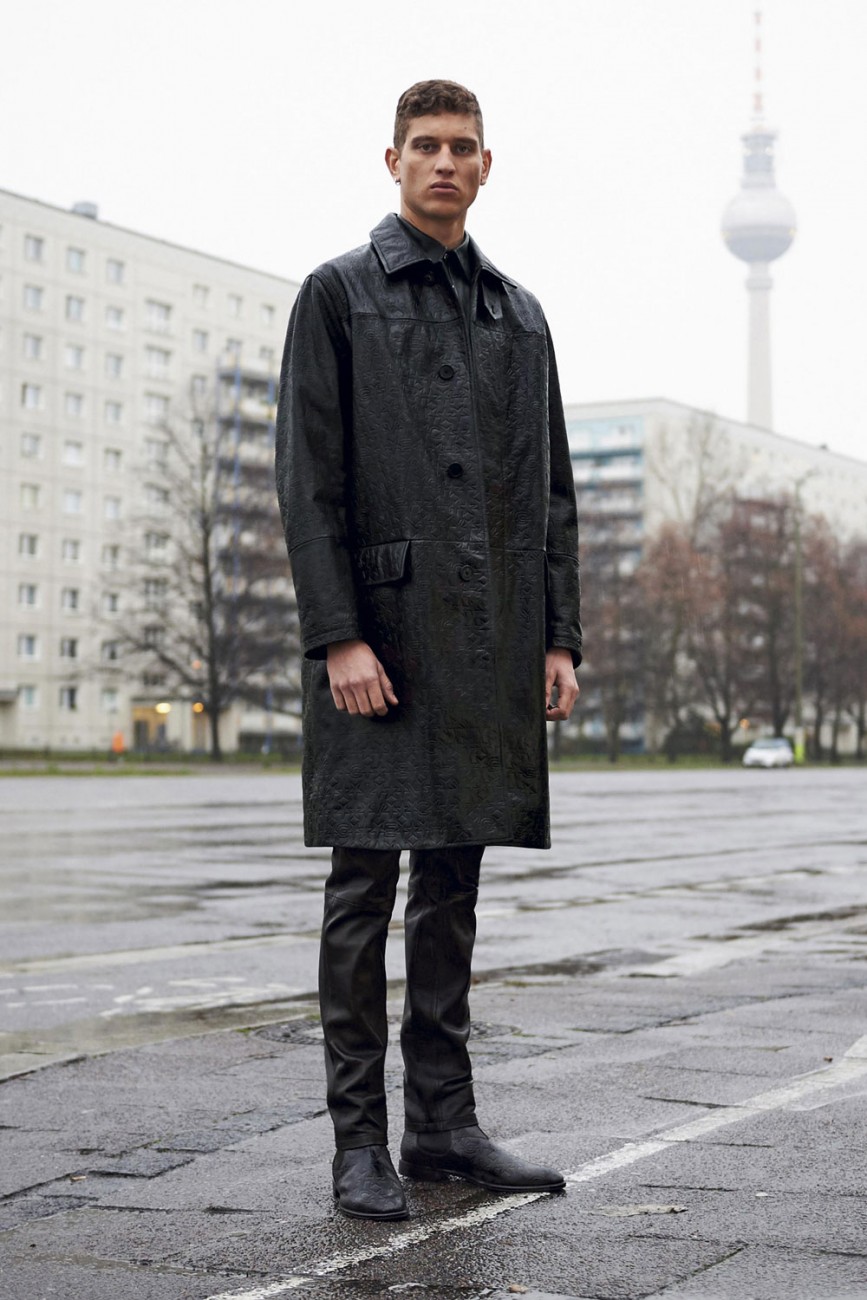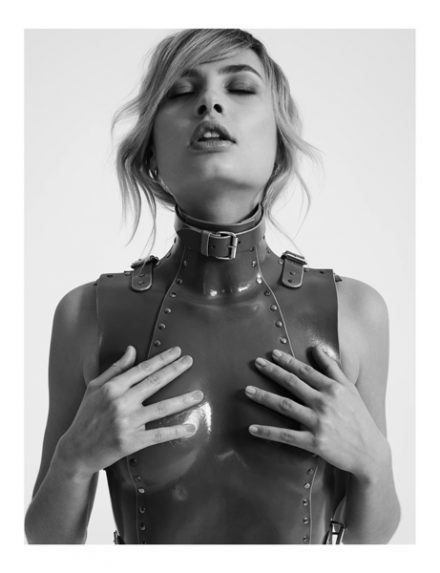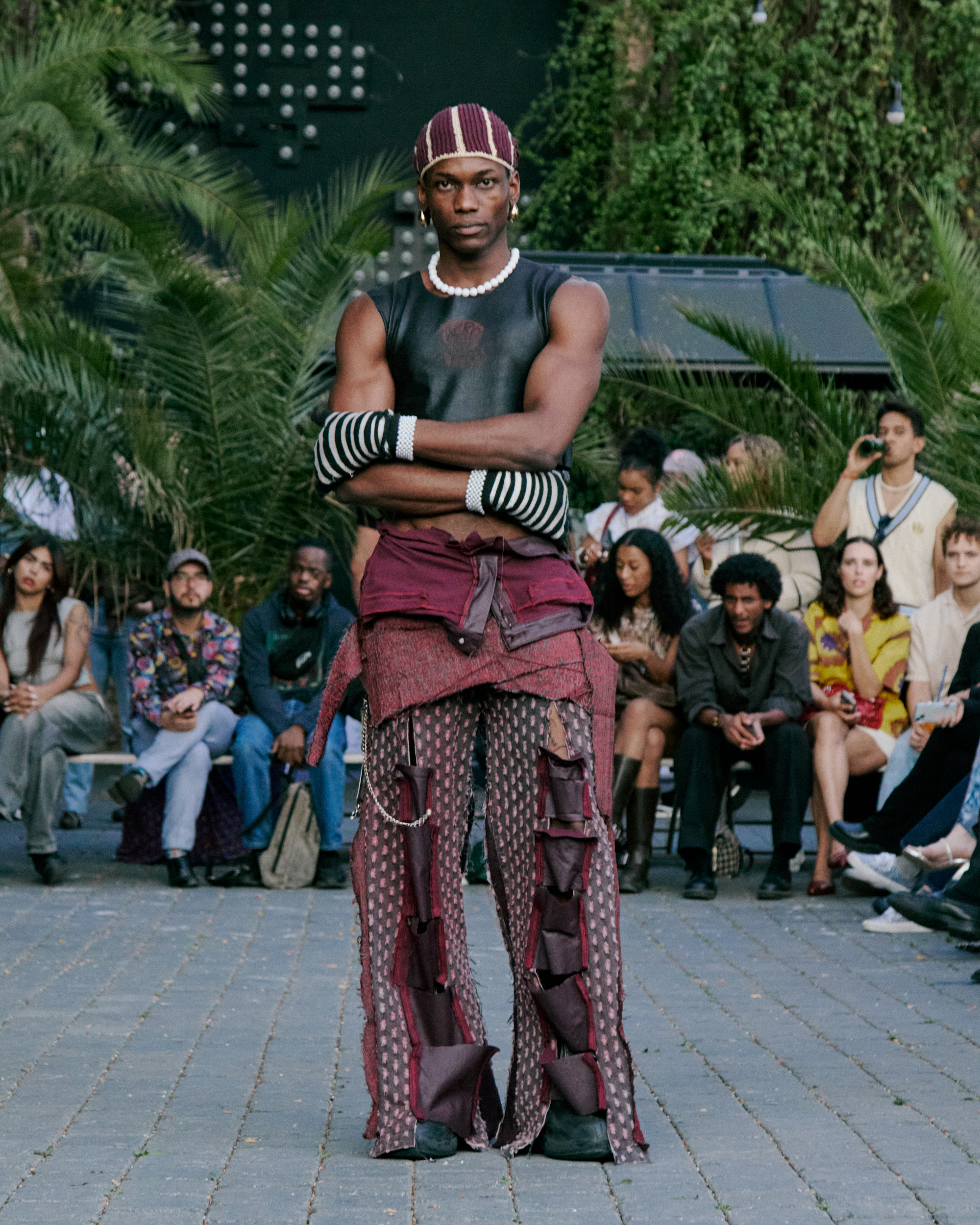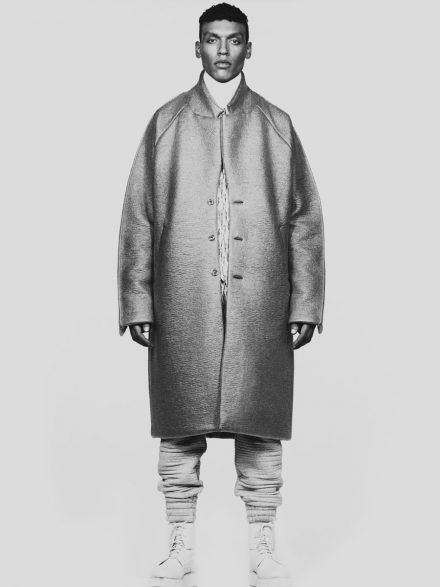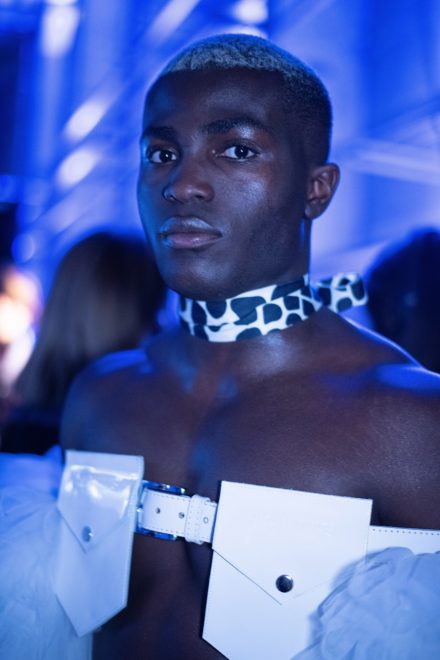“The young fashionable Berliner […] wears, from morning until night, […] a very militaristic style, very often with dirty linen. […] He is hardly concerned whether his clothes fit the colours or ornaments of the season… What is formal attire to him? […] And why adorn himself? […] He simply has no need to.”
“The Sorrows of Young Werther”, Johannes Wolfgang von Goethe, 1774
Alfred Döblin, Bertolt Brecht, Wim Wenders: over the span of it’s mythologised past, Berlin has played host to an astonishing breadth of revolutionary artists, directors and writers. Marked by a constant swimming against the tide, its creative culture relies on the forming of new means of expression across a range of contexts, in a manner as assertive as it is nonchalant. In recent times, the city has leapt from strength to strength on the international fashion landscape, asserting itself as a relevant, credible and dynamic centre. Yet given it’s turbulent past, what does this resurgence of interest mean for the scene’s sustainability, and to what extent can it be read as a harbinger of times to come?
 Glen Luchford for Gucci
Glen Luchford for Gucci
Recent Gucci and Givenchy campaigns, revealed within 3 days of one another, galvanised in their casting of the city in a starring role. Working to the same effect as the cameos of Haussmannian boulevards in countless Paris-shot campaigns, or that of the Oriental Pearl Tower in Dior’s David Lynch directed “Lady Blue Shanghai”, the featuring of quintessential infrastructural and architectural motifs is indicative of the high fashion world’s profound interest in, and eagerness to engage with, the complexities and nuances of creative Berlin. In the former campaign, youths garbed in flamboyant printed suits, flared trousers and oversized sepia-tinted glasses tumble boisterously through the cool greys and faded pastels of a Charlottenburg shopping arcade, going on to scale the roof of Friedrichstrasse’s Maritim Hotel in a scene almost lifted from “Wir Kinder vom Bahnhof Zoo”. Givenchy’s Matt Lambert-shot campaign videos, “Berlin 2016”, offer an altogether more current vision, broodily sound-tracked by L.I.E.S collaborator Lee Douglas. Saturated with gloom and a stern urgency, they reflect the city’s sharp austerity, palpable in the, albeit flecked with moments of kitsch, comparatively sober palettes of the collection. In both campaigns, Berlin acts as a backdrop against with the garments are accented and complimented, imbuing them with an essence that renders them whole. While an aesthetic gulf certainly lies between the two campaigns, this can only be viewed as a testament to the metropolis’ versatility, effortlessly accommodating fashion’s full visual and conceptual spectrum.
Under different circumstances, such raw versatility would surely have propelled the city to headier heights than those it currently dwells. Admittedly, it hardly fares poorly, rising the ranks to place at number 8 in a 2015 survey of the world’s most important fashion capitals, surpassing Tokyo, number 10, and Antwerp, at number 25. Though it is an achievement worthy of praise, and a tribute to the diligent efforts of a healthily expanding fashion community, why has it taken, and why is it still taking, so long for Berlin to gain deserved recognition and acclaim?

Glen Luchford for Gucci
With a distinct lack of good fortune, its rocky political & social history and location have hampered the development of any feasibly sustainable scene. Owing to a lack of reliable pan-European infrastructure and it’s distance from the London-Paris axis, the latest trends of the 18th and 19th centuries were rarely immediately available, necessitating meandering journeys across the continent, arriving, if at all, months after their moments in the traditional epicentres of European fashion had passed. Skipping ahead, the rise of National Socialism in the early 20th Century brought with it the tragic decimation of the predominantly Jewish-owned textile industry, and the post-war erection of the wall brought a swift end to any hopes of shaping a cohesive vestiary identity. 1989 heralded a new era, one rooted in social, cultural and political heterogeneity. Though unrecognisable from the sprawl once labelled “crude” by Goethe, the same ethics of transgression remained ever intact. Yet how could Berlin, financially crippled by the reunification’s logistical burden, compete on the same field as cities whose coffers had filled in its effective absence? Tempting investment from brands comfortably settled in wealthy Düsseldorf and Munich was sure to prove to be a challenge. In the face of such adversity, the only way to reinvigorate the barren fashion-scape seemed to be through shameless corporatisation, creating vast commercial zones in Mitte. As commerce-driven fashion culture sank its teeth into the city’s former communist heart, external investment began to flood in from all sides, perhaps shedding light on why Friedrichstraße’s most prominent department store is in fact an outpost of Parisian institution, Galeries Lafayette.
 Max von Gumppenberg and Patrick Bienert for Givenchy
Max von Gumppenberg and Patrick Bienert for Givenchy
According to the “Global Fashion Capitals” exhibition at Manhattan’s Museum at FIT, “Berlin is a creative epicent[re] with an energetic art, film, music and theat[re] scene. An emerging generation of young designers is changing the stereotype of commercial, functional German fashion and bringing […] a fresh range of styles, from edgy street wear to avant-garde creations.” The quotation’s ordering of media gives way to a widespread truth; Berlin has traditionally been, and continues to be, an art city above all. Indeed, this “stereotype of commercial, functional fashion” has lead to the opening of a chasm between the two worlds, with fashion generally considered a subordinate means of creative expression. Even within the fashion scene, and amongst those associated with it, there has undeniably been a tendency towards eschewing the connotations that ‘fashion’ inevitably bears, with artists, designers and photographers often preferring to situate their work elsewhere. Take, for example, the esteemed fine art photographer Wolfgang Tillmans. Though work produced in the advent of his career is often mistakenly categorised as ‘fashion photography’, in no small part due to the publication of his work in i-D, Tillmans has been active in distancing himself from the genre. And perhaps rightfully so, for thus considering his work does a great disservice to its intricacy and nuance. Of those who do allow themselves to be viewed under the fashion lens, many have flown the nest. Damir Doma, a former apprentice of Raf Simons, completed studies at the Berlin outpost of the acclaimed École supérieure des arts et des techniques de la mode, better known under the acronym ESMOD. While one would assume that his tenebrous oeuvre would easily have found a home here, he works from Paris, a city with an unparalleled fashion heritage and one more receptive to the consideration of fashion on its own terms.
 Max von Gumppenberg and Patrick Bienert for Givenchy
Max von Gumppenberg and Patrick Bienert for Givenchy
Though some may have garnered acclaim in distant lands, a blooming generation remain here resolute in carving out a niche, offering collections that prove fashion’s capacities as a versatile prism. Featured alongside Kilian Kerner at the aforementioned FIT exhibition, Marina Hoermanseder’s work toes the line between “fetish, the avant-garde and [ready-to-wear]”, drawing inspiration from the pool of sexual licentiousness and experimental creative practice at Berlin’s ideological core. But Marina is a mere drop in a sea of young designers carrying fashion into territories chartable only within the specific paradigms that the city unveils.
 Glen Luchford for Gucci
Glen Luchford for Gucci
While the eyes of the Guccis and Givenchys of the world may currently be trained on Berlin, the longevity of their interest is questionable; it need not be stated that the industry moves at unprecedentedly break-neck speed, a phenomenon that repeatedly finds itself at the fore of fashion debate. However, their catapulting of the city into such a prominent spotlight can certainly be read as a bold endorsement of its energy. Despite a torrent of setbacks across its painful history, the aches of which are often palpable in its bones, Berlin repeatedly mimics the phoenix, rising from the ashes better and bolder than before. The recent implementations of reliable infrastructural frameworks can only serve to strengthen an already bold momentum, heralding the city’s ascension to its rightful throne.
